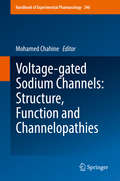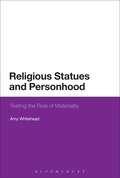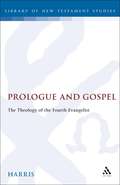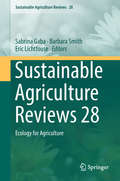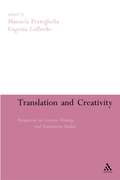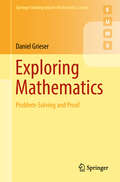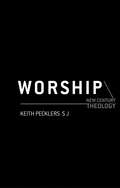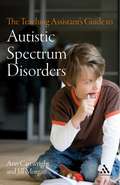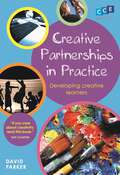- Table View
- List View
Echocardiography in the CCU
by Eyal Herzog Edgar ArgulianThis book comprehensively reviews the use of echocardiography in the rapidly evolving field of critical care cardiology. Increasingly, cardiac care units (CCU) are focusing on the management of patients with multisystem diseases, advanced hemodynamics compromise, complex ventricular arrhythmias, and established or incipient multi-organ failure. This book covers ultrasound applications in such topics as hemodynamic assessment and the assessment of patients with intracardiac devices. Syndrome-based echocardiography in the CCU is also covered with an emphasis on using echocardiography in patients with acute dyspnea, acute chest pain and neurologic syndromes. The use of contrast echocardiography in the CCU is also covered. Echocardiography in the CCU reveals the essential role of various echocardiographic modalities in modern acute cardiovascular care. This is therefore a critical resource for all cardiology practitioners and trainees who use echocardiography in CCUs.
Critical Care Nephrology and Renal Replacement Therapy in Children
by Akash Deep Stuart L. GoldsteinThis book represents an invaluable resource for professionals for the diagnosis and treatment of acute kidney injury (AKI) in children and how to select and deliver the appropriate form of renal replacement therapy (RRT). Experts from all over the globe have come together to share their wide experience in the field of Critical Care Nephrology in children. Paediatric critical care nephrology is a complex and highly specialised field, presenting challenges and management strategies that are often quite distinct from those seen in adult practice. Therefore, it is high time to address all the topics in the field of critical care nephrology in children in a unique book which is the first of its kind. This book covers the basics as well as advances in the field of Critical Care Nephrology. Each chapter is dedicated to practical aspects of a particular topic elucidating various management decision points. Each chapter is also accompanied with algorithms, figures and protocols in tabulated format. Information on how to manage specific conditions are contextualized with relevant background anatomy, physiology and biochemistry and practical examples. At the end of the chapter, there are key learning points. Paediatricians, nephrologists and paediatric intensivists, as well as paediatric critical care and nephrology nurses in all countries will find this book an invaluable reference text.
Voltage-gated Sodium Channels: Structure, Function and Channelopathies (Handbook of Experimental Pharmacology #246)
by Mohamed ChahineThis book provides a timely state-of-the-art overview of voltage-gated sodium channels, their structure-function, their pharmacology and related diseases. Among the topics discussed are the structural basis of Na+ channel function, methodological advances in the study of Na+ channels, their pathophysiology and drugs and toxins interactions with these channels and their associated channelopathies.
Religious Statues and Personhood: Testing the Role of Materiality
by Amy WhiteheadObjects such as statues and icons have long been problematic in the study of religion, especially in European Christianities. Through examining two groups, the contemporary Pagan Glastonbury Goddess religion in the Southwest of England and a cult of the Virgin Mary in Andalusia, Spain, Amy Whitehead asserts that objects can be more than representational or symbolic. In the context of increasing academic interest in materiality in religions and cultures, she shows how statues, or 'things', are not always interacted with as if they are inert material against which we typically define ourselves as 'modern' humans.Bringing two distinct cultures and religions into tension, animism and 'the fetish' are used as ways in which to think about how humans interact with religious statues in Western Europe and beyond. Both theoretical and descriptive, the book illustrates how religions and cultural practices can be re-examined as performances that necessarily involve not only human persons, but also objects.
Stylistics and Shakespeare's Language: Transdisciplinary Approaches (Advances in Stylistics)
by Mireille Ravassat Jonathan CulpeperThis innovative volume testifies to the current revived interest in Shakespeare's language and style and opens up new and captivating vistas of investigation. Transcending old boundaries between literary and linguistic studies, this engaging collaborative book comes up with an original array of theoretical approaches and new findings. The chapters in the collection capture a rich diversity of points of view and cover such fields as lexicography, versification, dramaturgy, rhetorical analyses, cognitive and computational corpus-based stylistic studies, offering a holistic vision of Shakespeare's uses of language. The perspective is deliberately broad, confronting ideas and visions at the intersection of various techniques of textual investigation. Such novel explorations of Shakespeare's multifarious artistry and amazing inventiveness in his use of language will cater for a broad range of readers, from undergraduates, postgraduates, scholars and researchers, to poetry and theatre lovers alike.
Prologue and Gospel: The Theology of the Fourth Evangelist (The Library of New Testament Studies #107)
by Elizabeth HarrisThis book demonstrates that a type of prologue found in ancient Greek literature could be the literary convention behind John 1.1-18. The structure and content of the Johannine prologue determine the structure and content of the whole Gospel. It provides the reader with seminal statements about the cosmic situation and God's plan for mankind, statements which are explicated thereafter. This function of the prologue is explored through the three historical personages mentioned in that largely metaphysical construction about the Logos: John, Moses and Jesus Christ. The person and mission of Jesus Christ, cryptically stated in the prologue, are explicated through three christological expressions: 'the Son of Man', 'I am', and 'the Son (of God)'. These require the Logos-creator conception in the background to give them theological coherence.
Transactions on Computational Collective Intelligence XXIX (Lecture Notes in Computer Science #10840)
by Ngoc Thanh Nguyen Ryszard KowalczykThese transactions publish research in computer-based methods of computational collective intelligence (CCI) and their applications in a wide range of fields such as the semantic Web, social networks, and multi-agent systems. TCCI strives to cover new methodological, theoretical and practical aspects of CCI understood as the form of intelligence that emerges from the collaboration and competition of many individuals (artificial and/or natural). The application of multiple computational intelligence technologies, such as fuzzy systems, evolutionary computation, neural systems, consensus theory, etc., aims to support human and other collective intelligence and to create new forms of CCI in natural and/or artificial systems. This twenty-ninth issue is a regular issue with 10 selected papers.
Exploring the Size of the Proton: by Means of Deeply Virtual Compton Scattering at CERN (Springer Theses)
by Philipp JörgThis book is a rare jewel, describing fundamental research in a highly dynamic field of subatomic physics. It presents an overview of cross section measurements of deeply virtual Compton scattering. Understanding the structure of the proton is one of the most important challenges that physics faces today. A typical tool for experimentally accessing the internal structure of the proton is lepton–nucleon scattering. In particular, deeply virtual Compton scattering at large photon virtuality and small four-momentum transfer to the proton provides a tool for deriving a three-dimensional tomographic image of the proton. Using clear language, this book presents the highly complex procedure used to derive the momentum-dissected transverse size of the proton from a pioneering measurement taken at CERN. It describes in detail the foundations of the measurement and the data analysis, and includes exhaustive studies of potential systematic uncertainties, which could bias the result.
Sustainable Agriculture Reviews 28: Ecology for Agriculture (Sustainable Agriculture Reviews #28)
by Sabrina Gaba Barbara Smith Eric LichtfouseThis book presents ecological principles and applications of managing biodiversity in agriculture to decrease pesticide use and produce safe food. Major topics include ecosystem services biological pest control, conservation agriculture, drought stress, and soil biodiversity, carbon and fertilisation.
Network Intelligence Meets User Centered Social Media Networks (Lecture Notes in Social Networks)
by Reda Alhajj H. Ulrich Hoppe Tobias Hecking Piotr Bródka Przemyslaw KazienkoThis edited volume presents advances in modeling and computational analysis techniques related to networks and online communities. It contains the best papers of notable scientists from the 4th European Network Intelligence Conference (ENIC 2017) that have been peer reviewed and expanded into the present format. The aim of this text is to share knowledge and experience as well as to present recent advances in the field. The book is a nice mix of basic research topics such as data-based centrality measures along with intriguing applied topics, for example, interaction decay patterns in online social communities. This book will appeal to students, professors, and researchers working in the fields of data science, computational social science, and social network analysis.
Translation and Creativity: Perspectives on Creative Writing and Translation Studies
by Manuela Perteghella Eugenia LoffredoTranslation and Creativity discusses the links between translation and creative writing from linguistic, cultural, and critical perspectives, through eleven chapters by established academics and practitioners. The relationship between translation and creative writing is brought into focus by theoretical, pedagogical, and practical applications, complemented by language-based illustrative examples. Innovative research and practice areas covered include ideas of self-translation and the 'spaces' of reading, mental 'black boxes' and cognition and the book introduces new concepts of transgeneric translation, pop translation and orthographical translation.
Equality in the Secondary School: Promoting Good Practice Across the Curriculum
by Mike ColeDrawing on a wealth of knowledge from a diverse group of contributors, this volume addresses the importance of going beyond equal opportunities. The contributors provide a compelling argument for promoting equality in secondary schools. Issues covered include: social class; 'race'; gender; sexual orientation; disability and special educational needs with reference to all subjects taught at secondary school level.
Social Identities and Multiple Selves in Foreign Language Education
by Damian J. Rivers Stephanie Ann HoughtonWithin foreign language education contexts across the globe, inadequate attention has been paid to documenting the dynamics of identity development, negotiation and management. This book looks at these dynamics in specific relation to otherness, in addition to attitudinal and behavioural overtones created through use of the term 'foreign' (despite its position as an integral marker in language acquisition discourse).This book argues that individual identities are multidimensional constructs that gravitate around a hub of intricate social networks of multimodal intergroup interaction. The chapters pursue a collective desire to move the notion of identity away from theoretical abstraction and toward the lived experiences of foreign language teachers and students. While the identities entangled with these interactions owe a significant measure of their existence to the immediate social context, they can also be actively developed by their holders. The collection of chapters within this book demonstrate how foreign language education environments (traditional and non-traditional) are ideal locations for the development of a sophisticated repertoire of discursive strategies used in the formulation, navigation, expression and management of social identities and multiple selves.
Aristotle's 'Politics': A Reader's Guide (Reader's Guides)
by Judith A. Swanson C. David CorbinIn the Politics, Aristotle sets out to discover what is the best form that the state can take. Similar to his mentor Plato, Aristotle considers the form that will produce justice and cultivate the highest human potential; however Aristotle takes a more empirical approach, examining the constitution of existing states and drawing on specific case-studies. In doing so he lays the foundations of modern political science.
Berkeley's Philosophy of Spirit: Consciousness, Ontology and the Elusive Subject (Continuum Studies in British Philosophy)
by Talia Mae BettcherThis book tackles some of the deepest problems in Berkeley's philosophy by providing a fresh interpretation of Berkeley's core ontological doctrines and their relationship to his views about self-consciousness. Berkeley, the author argues, is led to adopt a new model of self-consciousness because he rejects the basic metaphysics of many of his predecessors.This new model of self-consciousness provides the foundation for Berkeley's own ontological framework. Bettcher's interpretation provides answers to long-standing questions about Berkeley's traditionally derided views about mind, offers an elegant treatment of Berkeley's core metaphysical views more generally, and illuminates Berkeley's innovative attempt to address the important philosophical and theological issues of his day. Moreover, Bettcher shows the importance of Berkeley's philosophy of spirit to the perplexing thesis that the subject of experience is somehow mysteriously elusive. She argues that Berkeley can be seen as a transitional figure with respect to the older philosophical concept of 'subject' (as a metaphysical supporter of properties) and the more modern philosophical concept of 'subject (as opposed to 'object').She provides a re-reading of Hume's famous claim that when he turned reflection upon himself, he could perceive only perceptions and sheds new light on the notion of a 'subject of experience'. The book will be of substantial interest both to Berkeley scholars and to philosophers concerned with contemporary discussions of self-consciousness.
Salinity Responses and Tolerance in Plants, Volume 2: Exploring RNAi, Genome Editing and Systems Biology
by Vinay Kumar Shabir Hussain Wani Penna Suprasanna Lam-Son Phan TranSoil salinity is a key abiotic-stress and poses serious threats to crop yields and quality of produce. Owing to the underlying complexity, conventional breeding programs have met with limited success. Even genetic engineering approaches, via transferring/overexpressing a single ‘direct action gene’ per event did not yield optimal results. Nevertheless, the biotechnological advents in last decade coupled with the availability of genomic sequences of major crops and model plants have opened new vistas for understanding salinity-responses and improving salinity tolerance in important glycophytic crops. Our goal is to summarize these findings for those who wish to understand and target the molecular mechanisms for producing salt-tolerant and high-yielding crops. Through this 2-volume book series, we critically assess the potential venues for imparting salt stress tolerance to major crops in the post-genomic era. Accordingly, perspectives on improving crop salinity tolerance by targeting the sensory, ion-transport and signaling mechanisms were presented in Volume 1. Volume 2 now focuses on the potency of post-genomic era tools that include RNAi, genomic intervention, genome editing and systems biology approaches for producing salt tolerant crops.
Exploring Mathematics: Problem-Solving and Proof (Springer Undergraduate Mathematics Series)
by Daniel GrieserHave you ever faced a mathematical problem and had no idea how to approach it? Or perhaps you had an idea but got stuck halfway through? This book guides you in developing your creativity, as it takes you on a voyage of discovery into mathematics. Readers will not only learn strategies for solving problems and logical reasoning, but they will also learn about the importance of proofs and various proof techniques. Other topics covered include recursion, mathematical induction, graphs, counting, elementary number theory, and the pigeonhole, extremal and invariance principles. Designed to help students make the transition from secondary school to university level, this book provides readers with a refreshing look at mathematics and deep insights into universal principles that are valuable far beyond the scope of this book. Aimed especially at undergraduate and secondary school students as well as teachers, this book will appeal to anyone interested in mathematics. Only basic secondary school mathematics is required, including an understanding of numbers and elementary geometry, but no calculus. Including numerous exercises, with hints provided, this textbook is suitable for self-study and use alongside lecture courses.
The Scientific Correspondence of H.A. Lorentz: Volume 2, the Dutch Correspondents (Sources and Studies in the History of Mathematics and Physical Sciences)
by A. J. KoxThis is the second and final volume of Dutch physicist Hendrik Antoon Lorentz's scientific correspondence with Dutch colleagues, including Pieter Zeeman and Paul Ehrenfest. These 294 letters cover multiple subjects, ranging from pure mathematics to magneto-optics and wave mechanics. They reveal much about their author, including Lorentz's surprisingly active involvement in experimental matters in the first decades of his career. Letters are also devoted to general relativity, Lorentz's 1908 lecture on radiation theory, and his receipt of the Nobel Prize along with Zeeman in 1902.The letters are presented in their original language; Dutch originals are accompanied by English translations. A concise biography of Lorentz is also included.
Cognitive Theory and Documentary Film
by Catalin Brylla Mette KramerThis groundbreaking edited collection is the first major study to explore the intersection between cognitive theory and documentary film studies, focusing on a variety of formats, such as first-person, wildlife, animated and slow TV documentary, as well as docudrama and web videos. Documentaries play an increasingly significant role in informing our cognitive and emotional understanding of today’s mass-mediated society, and this collection seeks to illuminate their production, exhibition, and reception. Taking an interdisciplinary approach, the essays draw on the latest research in film studies, the neurosciences, cultural studies, cognitive psychology, social psychology, and the philosophy of mind. With a foreword by documentary studies pioneer Bill Nichols and contributions from both theorists and practitioners, this volume firmly demonstrates that cognitive theory represents a valuable tool not only for film scholars but also for filmmakers and practice-led researchers.
Cognitive Theory and Documentary Film
by Catalin Brylla Mette KramerThis groundbreaking edited collection is the first major study to explore the intersection between cognitive theory and documentary film studies, focusing on a variety of formats, such as first-person, wildlife, animated and slow TV documentary, as well as docudrama and web videos. Documentaries play an increasingly significant role in informing our cognitive and emotional understanding of today’s mass-mediated society, and this collection seeks to illuminate their production, exhibition, and reception. Taking an interdisciplinary approach, the essays draw on the latest research in film studies, the neurosciences, cultural studies, cognitive psychology, social psychology, and the philosophy of mind. With a foreword by documentary studies pioneer Bill Nichols and contributions from both theorists and practitioners, this volume firmly demonstrates that cognitive theory represents a valuable tool not only for film scholars but also for filmmakers and practice-led researchers.
Pediatric Mental Health for Primary Care Providers: A Clinician's Guide
by Sarah Y. Vinson Ebony S. VinsonThe purpose of this book is to provide a children’s mental health resource tailored to the needs of physicians working with children. There are currently no such texts, despite the fact that there are patient care, healthcare systems, and workforce factors that indicate a strong need for such a resource. Approximately 1 in 5 children are diagnosed with a mental illness by the age of 18. Additionally, mental health conditions, including Attention Deficit Hyperactivity Disorder, are consistently among the most common chronic conditions in pediatric clinical populations. Delays in both diagnosis and treatment increase the morbidity associated with these conditions. These delays expose the child to negative ramifications of his/her illness and can impact rates of poor academic performance, substance use disorders and criminal justice system involvement – potentially impacting long-term life trajectories. Early identification of mental illness and appropriate intervention is critical to the healthy development of youth, though physicians in primary care and pediatrics are seldom trained to detect and treat such illnesses. The importance of recognizing mental illness is reflected in practice guidelines for pediatric primary care providers as well as in how service delivery is being structured, but this does not offer in-depth clinical guidelines. Additionally, integrated care and medical home models include mental health as key components, though yet again physicians are often not trained to work with these models. While clearly indicated clinically, these requirements do not come with significant increases in reimbursement and are added to an already demanding schedule. Increasingly, providers are also expected to use evidence based screening instruments without exposure to this body of literature. Some guidance on using those instruments in context will help them to use those tools more effectively. Finally, primary care providers and even some adult psychiatrists and psychologists are operating in a healthcare system with a severe, nationwide shortage of child and adolescent psychiatrists and mental healthcare providers. While a text certainly cannot single-handedly compensate for such a workforce shortage, it could potentially help to mitigate the negative impact on patients by facilitating early identification and treatment in the primary care setting. Additionally, with more effective treatment in pediatric settings, less complex cases may be addressed before specialty care is needed, and the expertise of child and adolescent psychiatrists can be more effectively used for more complex cases.Pediatric Psychiatry in Primary Care is the ultimate resource for clinicians working with children, including pediatricians, family physicians, general psychiatrists, psychologists, early career child psychiatrists, social workers, nurses, school counselors, and all clinical professionals who may encounter children struggling with psychiatric disorders.
The Impossible Mourning of Jacques Derrida
by Sean GastonAt the time of his death in 2004, Jacques Derrida was arguably the most influential and the most controversial thinker in contemporary philosophy. But how does one respond to the death of Jacques Derrida? How does one mourn for Derrida, who spent thirty years warning of the dangers of mourning, while insisting that mourning is both unavoidable and impossible? In this original and engaging response to Derrida's death, Sean Gaston re-examines his own relationship with this great thinker and traces his own mourning, while examining the very nature of mourning in Derrida's work. Written in the immediate aftermath of Derrida's death, this insightful and touching account offers a fresh analysis of a vital element of Derrida's thought and a genuine reflection on the implications of Derrida's death for how we will now address his work.
Worship (New Century Theology)
by Keith PecklersIn Worship, Keith Pecklers aims to gives theologians, liturgists, clergy and laity of all denominations a new sense of the theology of liturgy.From a historical/theological treatment of the evolution of Christian worship in the West, Pecklers addresses 20th century liturgical reforms and emphasizes the liturgy's role in the social and moral transformation of human society. The social dimension of worship is further highlighted in chapters on popular religion and inculturation.He considers the future of Christian worship in light of a new sociological reality: the break up of the stable parish community, credible preaching within an increasingly secularized society, hospitality to those who are often made to feel like pariahs in our assemblies, and the growing rift between conservatives and progressives who share membership in the same church.
The Teaching Assistant's Guide to Autistic Spectrum Disorders (Teaching Assistant's Series)
by Ann Cartwright Jill MorganA practical guide that will enable Teaching Assistants to understand the difficulties experienced by children on the Autistic Spectrum.
Creative Partnerships in Practice: Developing Creative Learners
by David ParkerDrawing on the extensive archive of case studies from the Creative Partnerships Programme, from sculpture and storytelling to film and multimedia skills, and the experiences of Creative Partnerships individuals, Creative Partnerships in Practice is the authoritative guide to embedding creative learning in schools.The Creative Partnerships programme, run by the Arts Council, England, was the largest schools-based creative learning intervention ever seen. Artists and creative practitioners worked side by side with educators to bring creativity into the classroom. Over the course of a decade it helped almost 5,000 schools, 90,000 teachers and over one million young people to embrace creative learning both in school and at home.Written by David Parker, former Director of Research at Creativity, Culture & Education (CCE), this practical handbook builds on the Creative Partnerships programme and explains how you can embed the key principles of creative practice within your school.


